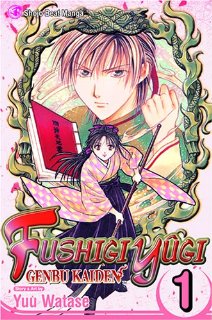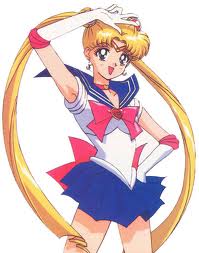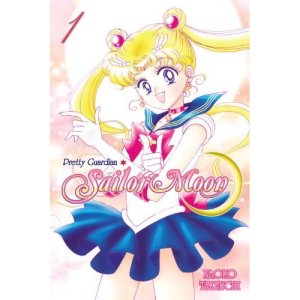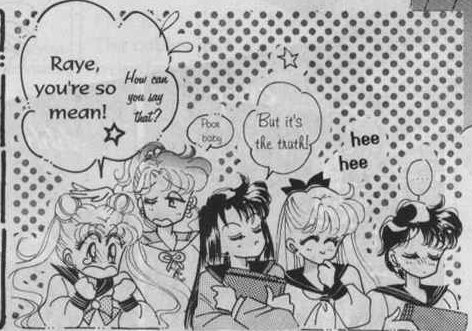What is gender? Are people of one sex or the other inherently gifted with certain skills or strengths or does that have more to do with gender roles that we learn as we grow up? Earlier this week, I came across some intriguing questions of gender posed by none other than Haruka Ten’ou from the famous Sailor Moon series.
 When Haruka first makes an appearance in the manga, we see a person with short hair in a racer’s suit wearing a confident smile, pointing back to a race car and exclaiming excitement over the speed of it. Haruka is supposed to be the best race car driver in Japan. He goes to a prestigious private school where young talents supposedly gather, skilled in judo, handsome, and even has a famous and elegant violinist for a girlfriend. By all accounts, Haruka is the ideal man. However, things aren’t so simple in Sailor Moon. As we later discover, Haruka is actually biologically female, but she stretches protagonist Usagi’s (as well as the reader’s) ideas of gender.
When Haruka first makes an appearance in the manga, we see a person with short hair in a racer’s suit wearing a confident smile, pointing back to a race car and exclaiming excitement over the speed of it. Haruka is supposed to be the best race car driver in Japan. He goes to a prestigious private school where young talents supposedly gather, skilled in judo, handsome, and even has a famous and elegant violinist for a girlfriend. By all accounts, Haruka is the ideal man. However, things aren’t so simple in Sailor Moon. As we later discover, Haruka is actually biologically female, but she stretches protagonist Usagi’s (as well as the reader’s) ideas of gender.
During the time when Usagi and her friends still believe Haruka to be male, Haruka challenges one of the girls, Mako, to a friendly judo match. When Haruka easily defeats Mako, throwing her full-force onto the mat, one of the other girls scolds Haruka for using “his” full strength against a “frail girl.” Now, as readers of Sailor Moon will know, this series is not one to play on societal ideas of strong, stoic men who protect frail, helpless girls (in fact, more often than not, the roles are almost reversed with the girls rescuing the guys) and through Usagi and her friends, we a shown that strength takes a variety of shapes, both physical and mental. Yet even these strong young women have taken in the message the women are inherently frail compared to men. Haruka, however, questions this thought process. “Gender shouldn’t matter,” she tells them. “Do you think it’s okay for a woman to lose to a man just because of her gender? If you believe that, how could you ever protect those who are important to you?” In turn, Mako doesn’t want to believe she lost simply because of her sex. While biology works in such a way that men are often bigger and therefore likely stronger than many of their female counterparts, that doesn’t make women frail nor does it mean it is impossible for a woman to be stronger than a man.
But Haruka takes it further than that. Eventually, Usagi realizes that there is more to Haruka than meets the eye. She is confused about Haruka’s sex and bothered that she can’t figure it out. Haruka appears to be male given her appearance and way of dress, but she could easily pass for female, too. She finally asks Haruka if she’s a man or woman, but Haruka replies with an interesting question: does it really matter one way or the other?
Usagi’s confusion over Haruka’s sex is understandable; after all, a person’s sex is usually obvious to us and whether we are conscious of it or not, this often changes the way we interact with that person. We can refer to someone as “he” or “she,” choose or avoid colors associated with a certain sex when we buy merchandise for that person, or treat that person more gently or bluntly depending on whether that person is a boy or a girl. That’s where we get into issues of behaviors that are more accepted or put down according to societal ideas of gender roles. Because someone’s sex plays such a defining role in life, it becomes important information to individuals. It should be noted that while most societies only recognize male and female, there are actually some societies that have three choices, including a third option for those who may be biologically male or female but identify more with the opposite sex.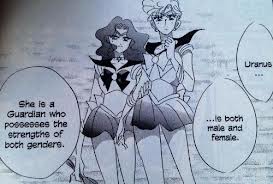
Finally, switching over to more magical elements, it struck me that Haruka is said to be endowed with both male and female strengths as a result of her having the powers of Uranus. Many of us may find that our sex (what we are biologically) and gender (socially constructed ideas about male and female identities) overall in that you are a female with feminine qualities or a male with masculine qualities, most of us probably also have some traits traditionally associated with the opposite sex.
The introduction of Haruka’s character has added some interesting dynamics to an already wonderful series. Once again, it’s amazing how something fiction can raise such complex and intriguing questions about things we all may deal with in our day-to-day lives without giving it a second thought. If you like questions about gender roles and want to read about more manga that bring up those kinds of questions, see my post on Otomen.


